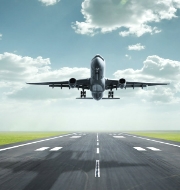What are Tail Strikes?
Tail strikes are a concerning issue in aviation, where the tail of an aircraft hits the ground or a stationary object during takeoff or landing. Such incidents can lead to significant damage to the aircraft’s structural integrity, requiring major repairs. IndiGo, one of India’s leading airlines, recently faced consequences for frequent tail strike incidents, resulting in a fine of Rs 30 lakhs imposed by the Directorate General of Civil Aviation (DGCA).
DGCA’s Intervention – Rs 30 Lakhs Fine
The DGCA is the regulatory body responsible for overseeing civil aviation operations in India. Following a special audit that revealed “systemic deficiencies” in IndiGo’s documentation regarding operations, training, and engineering procedures related to tail strikes, the DGCA issued a fine of Rs 30 lakhs to the airline. This financial penalty emphasizes the seriousness with which authorities view tail strike incidents.
Understanding Tail Strikes – Frequency and Impact
IndiGo experienced four tail strike incidents within a span of six months, reflecting the severity of the problem. These incidents often occur during aircraft landings, accounting for over 65% of all tail strikes, according to Airbus statistical data. The latest tail strike incident for IndiGo took place during a landing at Ahmedabad airport on June 15.
Root Cause – Pilot Error
The primary cause of tail strikes in aircraft can be attributed to pilot error. While modern aircraft come equipped with advanced systems to aid pilots and reduce the probability of human error, most tail strikes occur due to mistakes made by the flight crew during takeoff or landing. These errors are related to the aircraft’s pitching motion, specifically improper execution during critical phases of flight.
Tail Strikes During Takeoffs – Factors and Consequences
Tail strikes during takeoffs can occur due to various reasons:
- Incorrect Takeoff Speeds: Each aircraft has a designated takeoff speed (Vr) based on its weight. Attempting takeoff below this minimum speed can lead to the tail hitting the ground, caused by insufficient lift from the wings.
- Poor Rotation Technique: During takeoff, pilots need to achieve liftoff by pulling back on the control stick (stick) at Vr. A tail strike may occur when there is an excessive pitch rate, leading to a situation where the aircraft’s nose is elevated too high while it has not yet gained sufficient altitude from the ground.
- Incorrect Center of Gravity or Mistrimmed Stabilizer: Errors in setting the aircraft’s stabilizer to account for its center of gravity can affect pitch control, making it more susceptible to mishandling by the pilot and leading to a tail strike.
Tail Strikes During Landings – Challenges and Impact
Tail strikes during landings are more common and usually result in more significant damage due to the aircraft’s impact with the ground. These incidents often occur during unstable approaches, which can be caused by several factors:
- Too Low Approach Speed: During landing, if the approach speed is too low, the aircraft will sink rapidly. Pilots may attempt to compensate by pulling back on the controls, increasing the pitch attitude and reducing tail clearance, making a tail strike more likely.
- Improper Landing Flare: The landing flare is a maneuver that involves raising the nose of the aircraft to achieve an optimum landing. Initiating the flare too early or too late can lead to complications, potentially causing a tail strike.
- Incorrect Handling During Crosswinds: Crosswinds during landing present a challenge for pilots, as they must maintain a stable approach while being pushed away from the runway. The use of roll controls during crosswind landings can impact lift generation and increase the chances of a tail strike.
Month: Current Affairs - July, 2023
Category: India Nation & States Current Affairs


